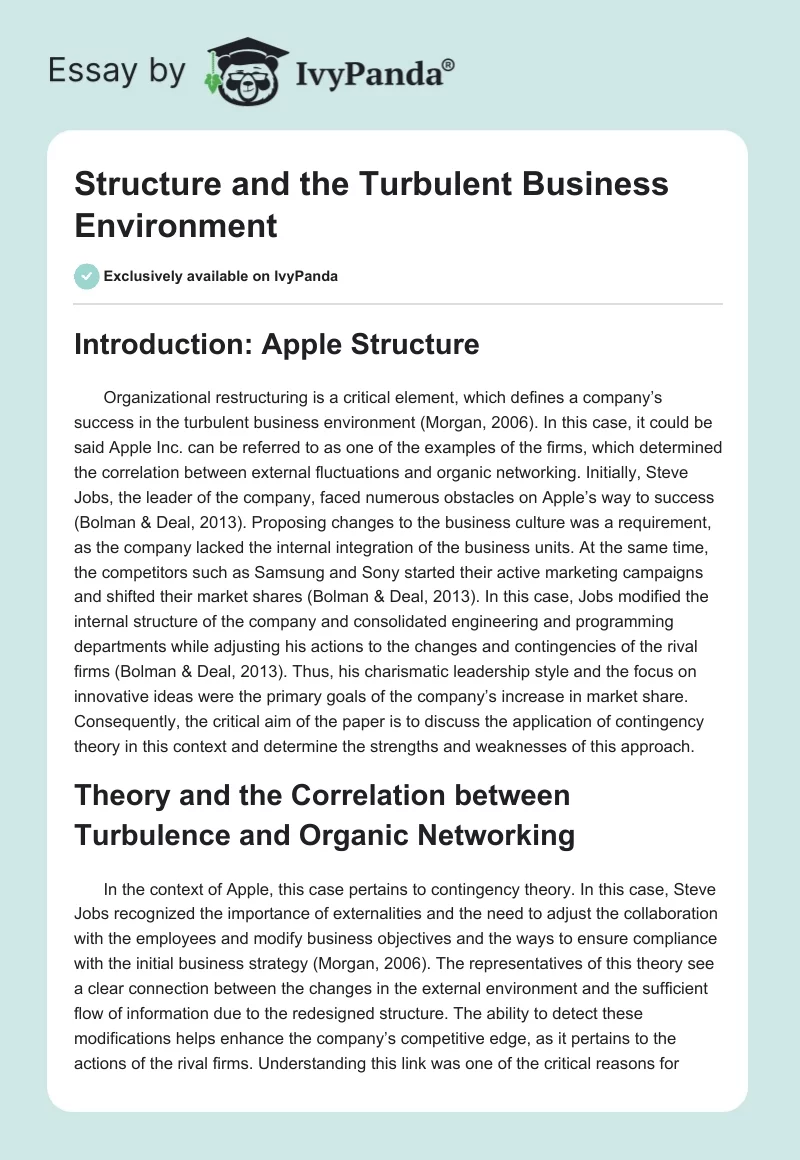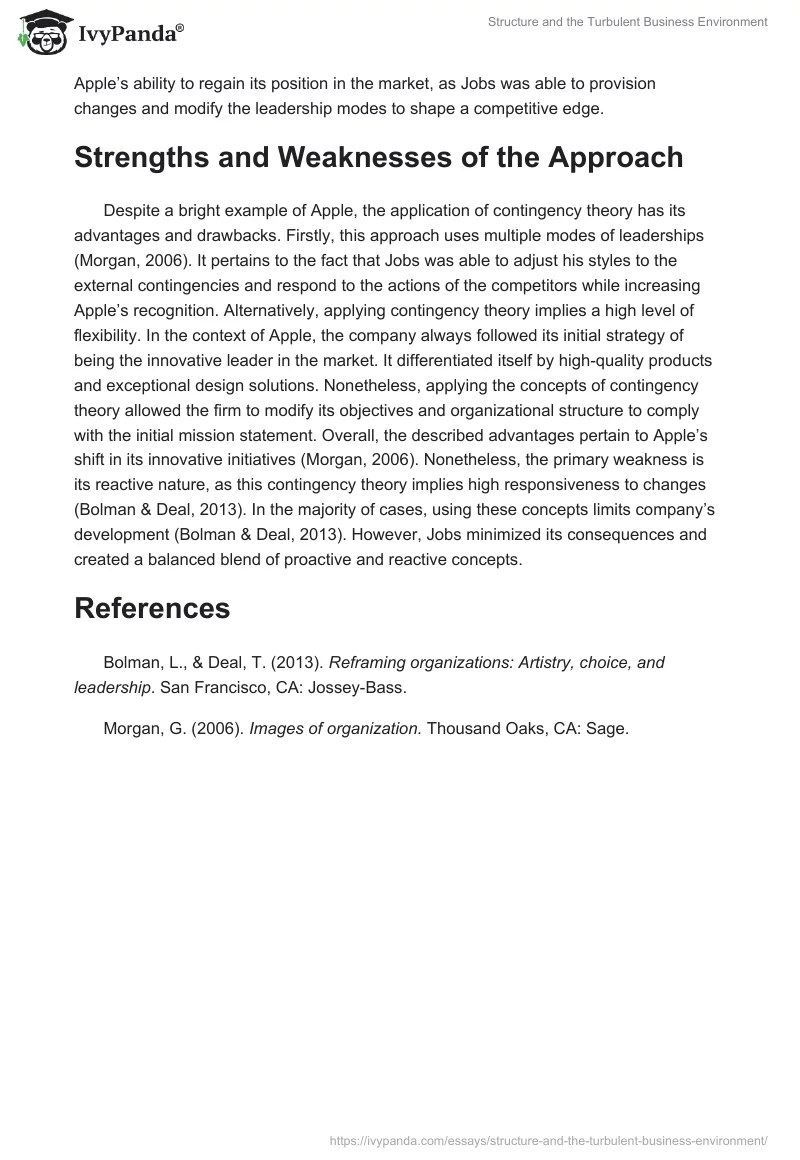Introduction: Apple Structure
Organizational restructuring is a critical element, which defines a company’s success in the turbulent business environment (Morgan, 2006). In this case, it could be said Apple Inc. can be referred to as one of the examples of the firms, which determined the correlation between external fluctuations and organic networking. Initially, Steve Jobs, the leader of the company, faced numerous obstacles on Apple’s way to success (Bolman & Deal, 2013). Proposing changes to the business culture was a requirement, as the company lacked the internal integration of the business units. At the same time, the competitors such as Samsung and Sony started their active marketing campaigns and shifted their market shares (Bolman & Deal, 2013). In this case, Jobs modified the internal structure of the company and consolidated engineering and programming departments while adjusting his actions to the changes and contingencies of the rival firms (Bolman & Deal, 2013). Thus, his charismatic leadership style and the focus on innovative ideas were the primary goals of the company’s increase in market share. Consequently, the critical aim of the paper is to discuss the application of contingency theory in this context and determine the strengths and weaknesses of this approach.
Theory and the Correlation between Turbulence and Organic Networking
In the context of Apple, this case pertains to contingency theory. In this case, Steve Jobs recognized the importance of externalities and the need to adjust the collaboration with the employees and modify business objectives and the ways to ensure compliance with the initial business strategy (Morgan, 2006). The representatives of this theory see a clear connection between the changes in the external environment and the sufficient flow of information due to the redesigned structure. The ability to detect these modifications helps enhance the company’s competitive edge, as it pertains to the actions of the rival firms. Understanding this link was one of the critical reasons for Apple’s ability to regain its position in the market, as Jobs was able to provision changes and modify the leadership modes to shape a competitive edge.
Strengths and Weaknesses of the Approach
Despite a bright example of Apple, the application of contingency theory has its advantages and drawbacks. Firstly, this approach uses multiple modes of leaderships (Morgan, 2006). It pertains to the fact that Jobs was able to adjust his styles to the external contingencies and respond to the actions of the competitors while increasing Apple’s recognition. Alternatively, applying contingency theory implies a high level of flexibility. In the context of Apple, the company always followed its initial strategy of being the innovative leader in the market. It differentiated itself by high-quality products and exceptional design solutions. Nonetheless, applying the concepts of contingency theory allowed the firm to modify its objectives and organizational structure to comply with the initial mission statement. Overall, the described advantages pertain to Apple’s shift in its innovative initiatives (Morgan, 2006). Nonetheless, the primary weakness is its reactive nature, as this contingency theory implies high responsiveness to changes (Bolman & Deal, 2013). In the majority of cases, using these concepts limits company’s development (Bolman & Deal, 2013). However, Jobs minimized its consequences and created a balanced blend of proactive and reactive concepts.
References
Bolman, L., & Deal, T. (2013). Reframing organizations: Artistry, choice, and leadership. San Francisco, CA: Jossey-Bass.
Morgan, G. (2006). Images of organization. Thousand Oaks, CA: Sage.


